Themed collection 2015 Emerging Investigators

Front cover
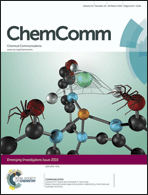
Inside front cover

Inside back cover
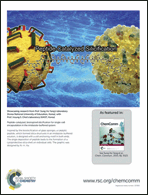
Back cover
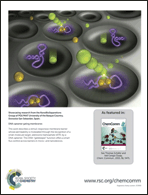
Contents list
Contributors to the Emerging Investigators Issue 2015
Chem. Commun., 2015,51, 5152-5169
https://doi.org/10.1039/C5CC90119G
Transformers: the changing phases of low-dimensional vanadium oxide bronzes
In this feature article, we explore the electronic and structural phase transformations of ternary vanadium oxides with the composition MxV2O5 where M is an intercalated cation.
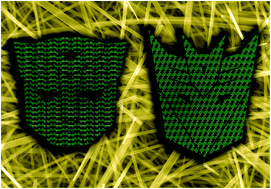
Chem. Commun., 2015,51, 5181-5198
https://doi.org/10.1039/C4CC08673B
Modular and orthogonal synthesis of hybrid polymers and networks
In this review, we highlight and discuss recent progress in the synthesis of hybrid biomaterials using modular, molecular building blocks and employing novel, bioorthogonal chemistries.
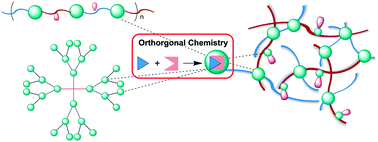
Chem. Commun., 2015,51, 5218-5237
https://doi.org/10.1039/C4CC09568E
Multicomponent low molecular weight gelators
We discuss the potential and challenges of multicomponent low molecular weight gels.
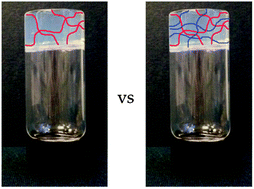
Chem. Commun., 2015,51, 5170-5180
https://doi.org/10.1039/C4CC08626K
The surface chemistry of metal–organic frameworks
Techniques to selectively modify the surfaces of metal–organic framework particles are reviewed, with particular focus on materials properties and applications.

Chem. Commun., 2015,51, 5199-5217
https://doi.org/10.1039/C4CC04458D
Achieving room temperature DNA amplification by dialling in destabilization
The ability to amplify nucleic acid sequences at room temperature without the need for any heating element has been achieved, which has promise in bio-diagnostics employed at the point of care.
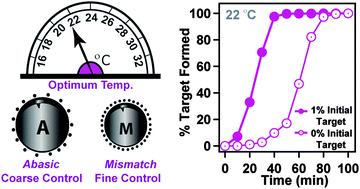
Chem. Commun., 2015,51, 9101-9104
https://doi.org/10.1039/C5CC01548K
Improving photo-controlled living radical polymerization from trithiocarbonates through the use of continuous-flow techniques
Herein, we report simple flow reactor designs that enable photo-controlled living radical polymerization (photo-CRP) from trithiocarbonates (TTCs) with significant enhancements in scalability and reaction rates compared to the analogous batch reactions.
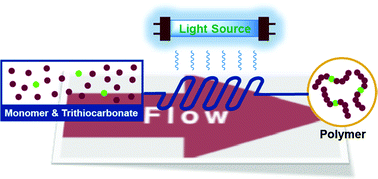
Chem. Commun., 2015,51, 6742-6745
https://doi.org/10.1039/C5CC01562F
Exploring Mn–O bonding in the context of an electronically flexible secondary coordination sphere: synthesis of a Mn(III)–oxo
Stabilization of Mn–O bonds by hydrogen-bond donating and accepting secondary coordination sphere.

Chem. Commun., 2015,51, 5310-5313
https://doi.org/10.1039/C4CC08603A
One-pot synthesis of doxorubicin-loaded multiresponsive nanogels based on hyperbranched polyglycerol
Doxorubicin-loaded nanogels with multiresponsive properties are prepared in a single step using hyperbranched polyglycerol as a biocompatible scaffold.

Chem. Commun., 2015,51, 5264-5267
https://doi.org/10.1039/C5CC00644A
Uthrene, a radically new molecule?
Quantum chemical models show that uthrene possesses an open-shell ground state and could be synthetically feasible.
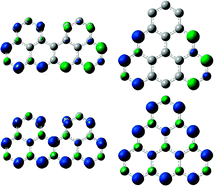
Chem. Commun., 2015,51, 5387-5390
https://doi.org/10.1039/C5CC01276G
Li-ion battery shut-off at high temperature caused by polymer phase separation in responsive electrolytes
Schematic of LTO/LFP battery with a thermally responsive electrolyte. The constant current discharge characteristics are shown at low and high temperature. The insets show the phase of the polymer in the cell at each temperature.
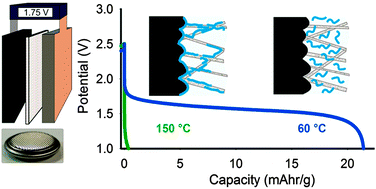
Chem. Commun., 2015,51, 5448-5451
https://doi.org/10.1039/C4CC10282G
Branched dimerization of Tat peptide improves permeability to HeLa and hippocampal neuronal cells
A designed, dimeric analogue of TAT-peptide translocates through HeLa and primary neuronal cell membrane in a non-linear dependence on concentration.
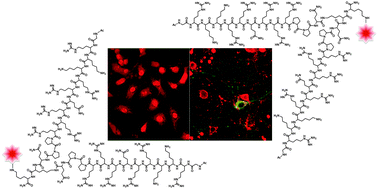
Chem. Commun., 2015,51, 5463-5466
https://doi.org/10.1039/C5CC00882D
Promiscuous hydroxylases for the functionalization of polycyclic tetramate macrolactams – conversion of ikarugamycin to butremycin
Application of PTM hydroxylases facilitates the selective late-stage functionalization of complex PTM core structures in vivo and in vitro.

Chem. Commun., 2015,51, 5334-5336
https://doi.org/10.1039/C5CC00843C
Conserved hydrogen bonding in tetrahydrocarbazolone derivatives: influence of solution-state assembly on crystal form nucleation
How subtle changes in substitution pattern can effect massive changes in crystallisation behaviour.
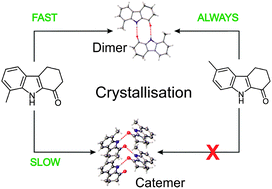
Chem. Commun., 2015,51, 5314-5317
https://doi.org/10.1039/C4CC10453F
The dramatic effect of the annealing temperature and dielectric functionalization on the electron mobility of indene-C60 bis-adduct thin films
The effect of annealing temperature/duration and surface functionalization is explored for indene-C60 bis-adduct (ICBA) films. Electron mobility approaches 0.1 cm2 V−1 s−1.
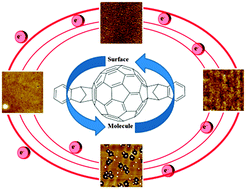
Chem. Commun., 2015,51, 5414-5417
https://doi.org/10.1039/C5CC00151J
Micropatterned, clickable culture substrates enable in situ spatiotemporal control of human PSC-derived neural tissue morphology
In situ regulation of the morphology of neural tissues derived from human pluripotent stem cells using micropatterned, clickable substrates.
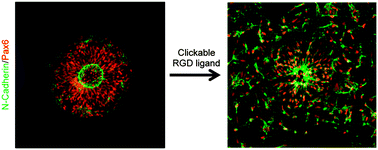
Chem. Commun., 2015,51, 5238-5241
https://doi.org/10.1039/C4CC08665A
Photo-responsive self-assemblies based on bio-inspired DNA-base containing bolaamphiphiles
Photo-responsive thymine incorporated bolaamphiphiles/superamphiphiles that can transfrom the aggregation morphology into spherical structures from ribbon-like structures by UV irradiation were investigated.
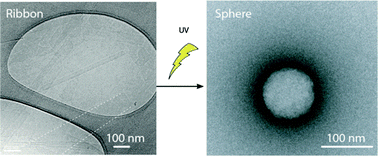
Chem. Commun., 2015,51, 5460-5462
https://doi.org/10.1039/C4CC08580A
β-(1-Azulenyl)-L-alanine – a functional probe for determination of pKa of histidine residues
Substitution of tryptophan with β-(1-azulenyl)-L-alanine allows for direct and straightforward determination of pKa values of histidines without perturbing protein function.
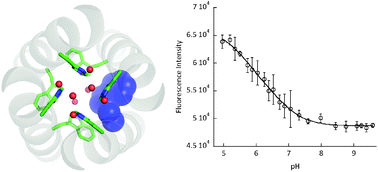
Chem. Commun., 2015,51, 5347-5350
https://doi.org/10.1039/C4CC08720H
σ-Alkenyl endo-palladacycle formation via regiospecific functionalisation of an unreactive NHC-tethered C(sp2)–H bond
A highly unusual cyclometallation reaction in which an aliphatic vinylic C(sp2)–H bond is activated to form a σ-vinyl palladacyclic–NHC complex is reported.

Chem. Commun., 2015,51, 5513-5515
https://doi.org/10.1039/C4CC10163D
Large phenyl-substituted acenes by cycloaddition reactions of the 2,6-naphthodiyne synthon
Diverse large acenes with promising photoelectronic properties can be obtained simply by bisaryne cycloadditions.

Chem. Commun., 2015,51, 5418-5420
https://doi.org/10.1039/C5CC00205B
DNA-aptamer gating membranes
This report describes a membrane barrier whose permeability is modulated through the recognition of a small-molecule target, adenosine triphosphate (ATP), by a DNA-aptamer.

Chem. Commun., 2015,51, 5471-5474
https://doi.org/10.1039/C4CC09660F
Probing post-synthetic metallation in metal–organic frameworks: insights from X-ray crystallography
Post-synthetic metallation is a key route to modifying MOFs but as shown here the choice of solvent affects the extent of reaction and the form of the metallated product.
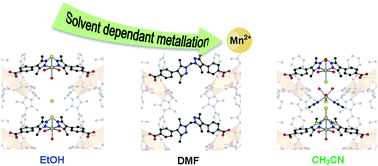
Chem. Commun., 2015,51, 5486-5489
https://doi.org/10.1039/C4CC09639H
A modular DNA origami-based enzyme cascade nanoreactor
In this communication, we present a nanoscale reactor assembled from tuneable and spatially addressable tubular DNA origami units.

Chem. Commun., 2015,51, 5351-5354
https://doi.org/10.1039/C4CC08472A
Target profiling of zerumbone using a novel cell-permeable clickable probe and quantitative chemical proteomics
The first target profile for zerumbone in live cancer cells determined through quantitative competitive chemical proteomics with a cell-permeable probe.
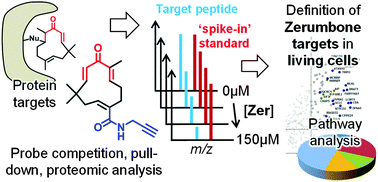
Chem. Commun., 2015,51, 5497-5500
https://doi.org/10.1039/C4CC09527H
Assessing dimerisation degree and cooperativity in a biomimetic small-molecule model by pulsed EPR
Pulsed electron paramagnetic resonance (EPR) spectroscopy is used for titrating spin-labelled terpyridine with Zn(II)-solution to study complex formation. This system can serve as a small-molecule model system for tuneable dimerisation.

Chem. Commun., 2015,51, 5257-5260
https://doi.org/10.1039/C4CC08656B
Synthetic peptides caged on histidine residues with a bisbipyridyl ruthenium(II) complex that can be photolyzed by visible light
We report a light-sensitive histidine building block for Fmoc/tBu solid-phase peptide synthesis in which the imidazole side chain is coordinated to a ruthenium complex.
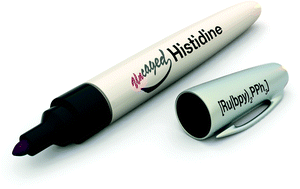
Chem. Commun., 2015,51, 5501-5504
https://doi.org/10.1039/C4CC08049A
Enhanced reactivity of dendrons in the Passerini three-component reaction
An unexpected substituent effect that accelerates Passerini reactions in THF has enabled the synthesis of three generations of dendrimers.
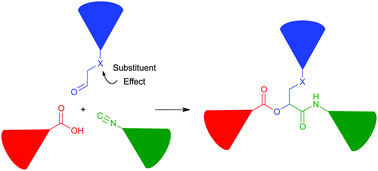
Chem. Commun., 2015,51, 5456-5459
https://doi.org/10.1039/C4CC10091C
An efficient route to highly strained cyclobutenes: indium-catalyzed reactions of enynals with alkynes
A catalytic method to synthesize the highly strained cyclobutene was developed. The reaction was believed to proceed through a formal indium-catalyzed [2+2] cycloaddition between electron-deficient enynals and a variety of alkynes.

Chem. Commun., 2015,51, 5530-5533
https://doi.org/10.1039/C4CC08506J
Formation and in situ reactions of hypervalent iodonium alkynyl triflates to form cyanocarbenes
The conversion of readily available silylalkynes, iodobenzene diacetate, and azide anions was utilized to form and react cyanocarbenes.
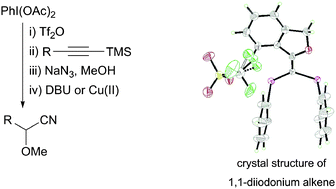
Chem. Commun., 2015,51, 5287-5289
https://doi.org/10.1039/C4CC08676G
Determination of receptor specificities for whole influenza viruses using multivalent glycan arrays
A multivalent glycan array for interrogating the binding preferences of intact influenza viruses.

Chem. Commun., 2015,51, 5326-5329
https://doi.org/10.1039/C4CC08613A
Ethanol induces the formation of water-permeable defects in model bilayers of skin lipids
We observe that ethanol can induce the formation of water-permeable defects in model bilayers of skin lipids and propose this as a new mechanism of action of ethanol as a membrane modulator.
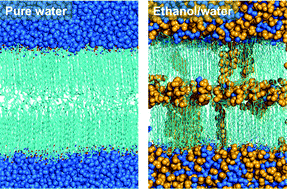
Chem. Commun., 2015,51, 5406-5409
https://doi.org/10.1039/C4CC08527B
Contributions to activity enhancement via Fe incorporation in Ni-(oxy)hydroxide/borate catalysts for near-neutral pH oxygen evolution
Increases in the activity of Ni–borate oxygen evolution catalysts with anodic conditioning are accompanied by Fe incorporation from electrolyte impurities; Fe-free films show poor activity.
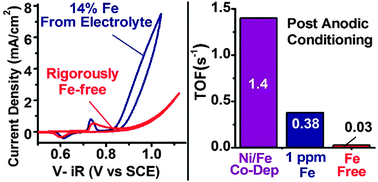
Chem. Commun., 2015,51, 5261-5263
https://doi.org/10.1039/C4CC08670H
A dual-boron-cored luminogen capable of sensing and imaging
A new dual-boron-cored luminogen ligated with a nitrogen-containing multidentate ligand and four bulky phenyl rings exhibits AIE and piezochromism. Furthermore, it shows good capabilities for imaging and anion sensing.
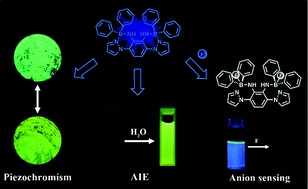
Chem. Commun., 2015,51, 5298-5301
https://doi.org/10.1039/C4CC08551E
Synthesis and photophysical properties of platinum-acetylide copolymers with thiophene, selenophene and tellurophene
A series of platinum-acetylide copolymers with thiophene, selenophene, and tellurophene have been synthesized and studied.
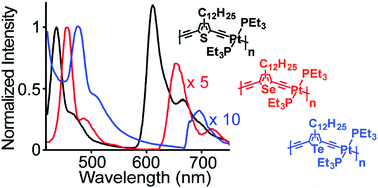
Chem. Commun., 2015,51, 5475-5478
https://doi.org/10.1039/C4CC09312G
One-step functionalization of zwitterionic poly[(3-(methacryloylamino)propyl)dimethyl(3-sulfopropyl)ammonium hydroxide] surfaces by metal–polyphenol coating
The non-biofouling properties of a zwitterionic sulfobetaine polymer surface were easily made attractive to bioentities by metal–polyphenol coating.
![Graphical abstract: One-step functionalization of zwitterionic poly[(3-(methacryloylamino)propyl)dimethyl(3-sulfopropyl)ammonium hydroxide] surfaces by metal–polyphenol coating](/en/Image/Get?imageInfo.ImageType=GA&imageInfo.ImageIdentifier.ManuscriptID=C4CC08609K&imageInfo.ImageIdentifier.Year=2015)
Chem. Commun., 2015,51, 5340-5342
https://doi.org/10.1039/C4CC08609K
Neptunyl(VI) centred visible LMCT emission directly observable in the presence of uranyl(VI)
The room temperature detection of neptunyl(VI) LMCT emission in a coordination compound and in the presence of uranyl(VI) is reported for the first time. Differences in the excitation profile of each complex enables spectral editing of the neptunyl(VI) and uranyl(VI) emission.
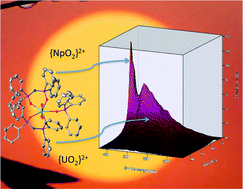
Chem. Commun., 2015,51, 5402-5405
https://doi.org/10.1039/C4CC08718F
Nanoparticle–electrode collisions as a dynamic seeding route for the growth of metallic nanostructures
The collisions between colloidal metal nanoparticles and a carbon electrode were explored as a dynamic method for the electrodeposition of a diverse range of electrocatalytically active Ag and Au nanostructures whose morphology is dominated by the electrostatic interaction between the charge of the nanoparticle and metal salt.
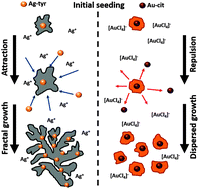
Chem. Commun., 2015,51, 5410-5413
https://doi.org/10.1039/C4CC09614B
The best of both worlds: active enzymes by grafting-to followed by grafting-from a protein
Hydrophilic polymers were attached to lysozyme by a combination of grafting-to and grafting-from approaches using RAFT polymerization.
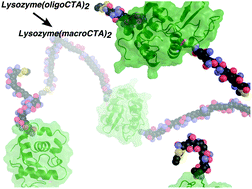
Chem. Commun., 2015,51, 5343-5346
https://doi.org/10.1039/C4CC09287B
Triazolo-β-aza-ε-amino acid and its aromatic analogue as novel scaffolds for β-turn peptidomimetics
Triazolo-β-aza-ε-amino acid and its aromatic analogue (AlTAA/ArTAA) in the peptide backbone mark a novel class of conformationally constrained molecular scaffolds to induce β-turn conformations. This was demonstrated in a Leu-enkephalin analogue and in other designed peptides.

Chem. Commun., 2015,51, 5242-5245
https://doi.org/10.1039/C4CC08414D
Unprecedented spin localisation in a metal–metal bonded dirhenium complex
[N(n-Bu)4]3[Re2(mnt)5] is the first class I, valence localized dirhenium(III,IV) compound, with a metal–metal bond.

Chem. Commun., 2015,51, 5482-5485
https://doi.org/10.1039/C4CC09397F
Thermal C–H borylation using a CO-free iron boryl complex
Thermal C–H borylation was observed from a phosphine-supported iron boryl complex.

Chem. Commun., 2015,51, 5379-5382
https://doi.org/10.1039/C4CC09180A
Gallium(III)- and calcium(II)-catalyzed Meyer–Schuster rearrangements followed by intramolecular aldol condensation or endo-Michael addition
The first gallium- and calcium-catalyzed Meyer–Schuster rearrangements are described. The incipient conjugated ketones can undergo calcium-catalyzed aldol condensation (a) or endo-Michael addition (b) with β-keto esters or amides.
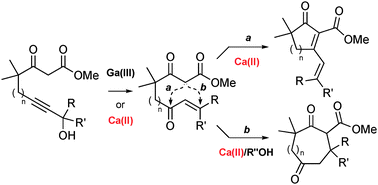
Chem. Commun., 2015,51, 5318-5321
https://doi.org/10.1039/C4CC09514F
Electrochemical hydrogenation of a homogeneous nickel complex to form a surface adsorbed hydrogen-evolving species
A Ni(II) complex with nitrogen and sulfur donor ligands degrades electrochemically in the presence of acid in acetonitrile to form an electrode adsorbed film that catalytically evolves hydrogen.
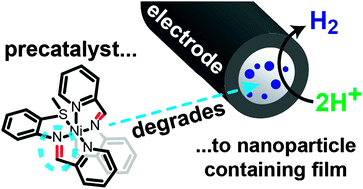
Chem. Commun., 2015,51, 5290-5293
https://doi.org/10.1039/C4CC08662G
Sticky tubes and magnetic hydrogels co-assembled by a short peptide and melanin-like nanoparticles
The co-assembly of peptide monomers and polydopamine-based nanoparticles leads to the formation of either tubular structures decorated with adhesive particles or magnetic hydrogel.
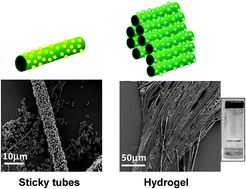
Chem. Commun., 2015,51, 5432-5435
https://doi.org/10.1039/C4CC07671K
Amide–triazole isosteric substitution for tuning self-assembly and incorporating new functions into soft supramolecular materials
We report the proof-of-concept demonstration for the synthesis of novel supramolecular soft gel materials based on amide–triazole isometric substitution.
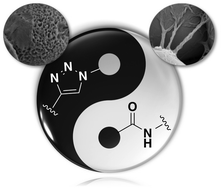
Chem. Commun., 2015,51, 5294-5297
https://doi.org/10.1039/C4CC08593K
Peptide-catalyzed, bioinspired silicification for single-cell encapsulation in the imidazole-buffered system
Cytoprotective silica encapsulation of individual yeast cells is achieved by a peptide-catalyzed silicification under mild conditions, inspired by glass sponges.

Chem. Commun., 2015,51, 5523-5525
https://doi.org/10.1039/C4CC08544B
Thiophosphoramides as cooperative catalysts for copper-catalyzed arylation of carboxylates with diaryliodonium salts
A thiophosphoramide-based co-catalyst was found to significantly accelerate copper(II) trifluoromethanesulfonate-catalyzed arylation of potassium carboxylates with diaryliodonium salts.
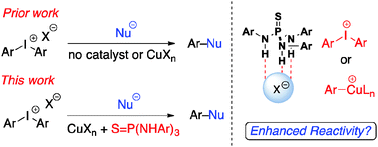
Chem. Commun., 2015,51, 5398-5401
https://doi.org/10.1039/C4CC08604J
Pyrene-based mechanically interlocked SWNTs
Pyrene serves as a recognition motif to template the synthesis of mechanically interlocked derivatives of SWNTs.
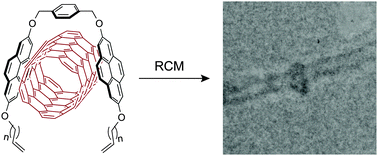
Chem. Commun., 2015,51, 5421-5424
https://doi.org/10.1039/C4CC08970G
Cation–π interactions in iminium ion activation: correlating quadrupole moment & enantioselectivity
A cation–π interaction is operational in the addition of uncharged nucleophiles to iminium salts derived from MacMillan's 1st generation catalyst.
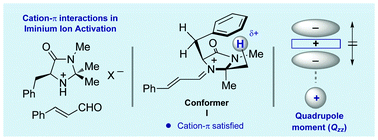
Chem. Commun., 2015,51, 5322-5325
https://doi.org/10.1039/C4CC08520E
Control over connectivity and magnetism of tetrahedral FeSe2 chains through coordination Fe–amine complexes
Magnetic interactions in compounds containing tetrahedral ∞1(FeSe2) chains separated by Fe–amine complexes are controlled by the denticity of the amine.
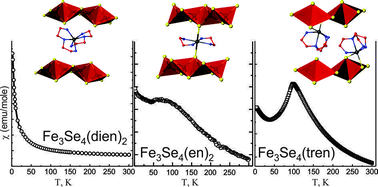
Chem. Commun., 2015,51, 5355-5358
https://doi.org/10.1039/C4CC08608B
Predicting the structure and interfacial activity of diblock brush, mixed brush, and Janus-grafted nanoparticles
We develop a field theoretic simulation model to study the interfacial properties of grafted nanoparticles as a function of the grafting architecture.
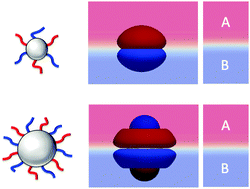
Chem. Commun., 2015,51, 5440-5443
https://doi.org/10.1039/C4CC08659G
C6 picoloyl protection: a remote stereodirecting group for 2-deoxy-β-glycoside formation
Direct synthesis of β-2-deoxyglycosides by remote stereochemical control through the use of a picoloyl protecting function.
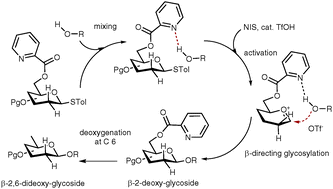
Chem. Commun., 2015,51, 5394-5397
https://doi.org/10.1039/C4CC08465A
IMes-acac: hybrid combination of diaminocarbene and acetylacetonato sub-units into a new anionic ambidentate NHC ligand
A new anionic N-heterocyclic carbene composed of a diaminocarbene unit fused with an acetylacetonate backbone is described.
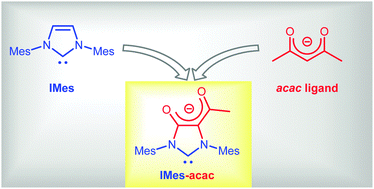
Chem. Commun., 2015,51, 5271-5274
https://doi.org/10.1039/C4CC08641D
Iron-mediated Markovnikov-selective hydro-trifluoromethylthiolation of unactivated alkenes
An iron-mediated hydro-trifluoromethylthiolation of unactivated olefins under mild conditions was described for the first time.

Chem. Commun., 2015,51, 5479-5481
https://doi.org/10.1039/C4CC08655D
γ-Silylboronates in the chiral Brønsted acid-catalysed allylboration of aldehydes
The use of functionalised allylboronates in the catalytic enantioselective allylation of aldehydes is described for the first time. γ-Silylallyl pinacolate derivatives give rise to α-silyl homoallylic alcohols, useful intermediates as showcased by their transformation into fluorinated allylic alcohols.
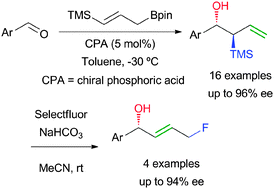
Chem. Commun., 2015,51, 5246-5249
https://doi.org/10.1039/C4CC08598A
Phosphorescent organoplatinum(II) complexes with a lipophilic anion: supramolecular soft nanomaterials through ionic self-assembly and metallophilicity
In the ionic self-assembly of organoplatinum(II) complexes, the lipophilic anion dictates the polymer-like processability and the cation decides the light-emitting capability.
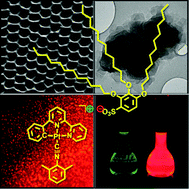
Chem. Commun., 2015,51, 5371-5374
https://doi.org/10.1039/C4CC08569H
Multiplex plasmonic anti-counterfeiting security labels based on surface-enhanced Raman scattering
We demonstrate a multiplex plasmonic anti-counterfeiting platform by embedding multiple molecules on a single substrate with superior spectral and spatial resolution.
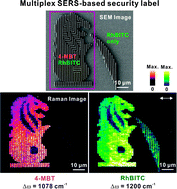
Chem. Commun., 2015,51, 5363-5366
https://doi.org/10.1039/C4CC08596E
Chemical controls on uranyl citrate speciation and the self-assembly of nanoscale macrocycles and sandwich complexes in aqueous solutions
Speciation and molecular self-assembly of uranyl citrate complexes have been determined based upon structural characterization and spectroscopic studies.
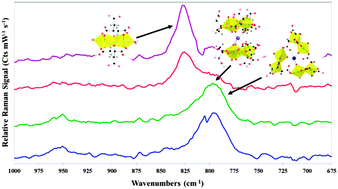
Chem. Commun., 2015,51, 5306-5309
https://doi.org/10.1039/C4CC08657K
Coordination responsive tellurium-containing multilayer film for controlled delivery
A coordination-responsive tellurium-containing film was fabricated to load cisplatin by Te–Pt coordination, and competitive bio-ligands could trigger the release of cisplatin.
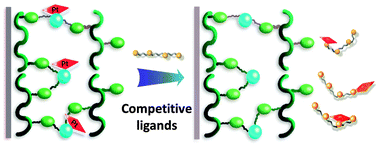
Chem. Commun., 2015,51, 5520-5522
https://doi.org/10.1039/C4CC08588D
Catalytic, highly enantioselective, direct amination of enecarbamates
Highly enantioselective electrophilic amination reaction of enecarbamates with dibenzylazodicarboxylate and oxygenated nucleophiles catalyzed by chiral phosphoric acids is reported. Subsequent reduction or oxidation of the resulting precursors of α-hydrazinoimines leads to 1,2-diamines or α-amino acid precursors, respectively, in excellent yields and enantioselectivities.
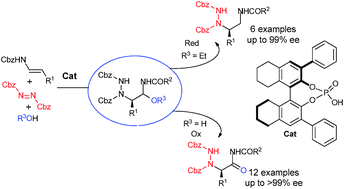
Chem. Commun., 2015,51, 5383-5386
https://doi.org/10.1039/C4CC08052A
A hyperbranched supramolecular polymer constructed by orthogonal triple hydrogen bonding and host–guest interactions
A hyperbranched supramolecular polymer has been constructed by two orthogonal classical binding interactions: triple hydrogen bonding and host–guest interaction.

Chem. Commun., 2015,51, 5429-5431
https://doi.org/10.1039/C4CC08533G
Light-induced structural evolution of photoswitchable carbohydrate-based surfactant micelles
We report the light-induced structural evolution of photoswitchable carbohydrate-based surfactant micelles using time-resolved small-angle neutron scattering (TR-SANS), monitoring the structural changes in micellisation in situ over time and demonstrating for the first time the course and implications of this process.
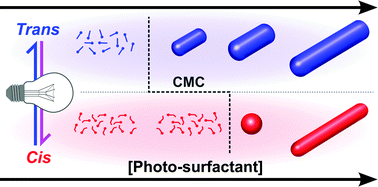
Chem. Commun., 2015,51, 5509-5512
https://doi.org/10.1039/C4CC07657E
Application of a nucleophilic boryl complex in the frustrated Lewis pair: activation of H–H, B–H and C![[double bond, length as m-dash]](https://www.rsc.org/images/entities/char_e001.gif) C bonds with B(C6F5)3 and boryl–borate lithium
C bonds with B(C6F5)3 and boryl–borate lithium
The frustrated Lewis pair (FLP) comprised of boryl–borate lithium [pinBB(Ph)pin]Li and B(C6F5)3 can efficiently activate H2, HBpin and C2H4.
![Graphical abstract: Application of a nucleophilic boryl complex in the frustrated Lewis pair: activation of H–H, B–H and C [[double bond, length as m-dash]] C bonds with B(C6F5)3 and boryl–borate lithium](/en/Image/Get?imageInfo.ImageType=GA&imageInfo.ImageIdentifier.ManuscriptID=C4CC07658C&imageInfo.ImageIdentifier.Year=2015)
Chem. Commun., 2015,51, 5505-5508
https://doi.org/10.1039/C4CC07658C
Collagen labelling with an azide-proline chemical reporter in live cells
Biosynthetic incorporation of an azide-proline chemical reporter into collagen allows selective imaging in live foetal ovine osteoblasts using a strain-promoted [3+2] azide–alkyne cycloaddition reaction.
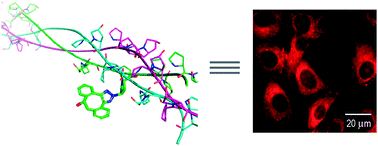
Chem. Commun., 2015,51, 5250-5252
https://doi.org/10.1039/C4CC07974D
Water-soluble nickel-bis(dithiolene) complexes as photothermal agents
Pegylated nickel-bis(dithiolene) complexes can efficiently convert NIR light into heat in water to induce cell death.
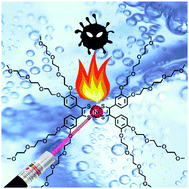
Chem. Commun., 2015,51, 5268-5270
https://doi.org/10.1039/C4CC08231A
About this collection
This annual special issue, now in its fifth year, showcases the high quality research being carried out by researchers in the early stages of their independent careers. It highlights up-and-coming scientists who are internationally recognised for making outstanding contributions to their respective fields. New articles will be added to this collection as they are published.